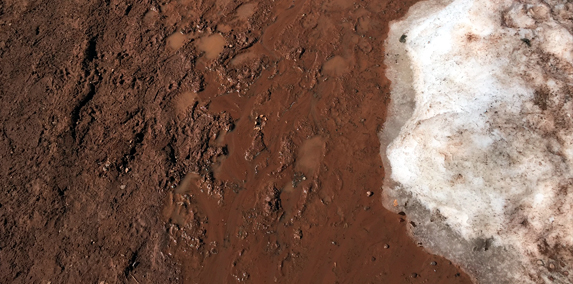
The Roaring Fork Valley is a beautiful place and Colorado’s seasons are a sight to behold – four gorgeous seasons. Visitors come from all over the world to ski in the winter and hike in the summer. But, between winter and spring, locals experience the 5th season. It’s a special time when the winter’s snow begins to melt on the mountains just before spring’s bloom. And thus behold, mud season.
Spring and summer have a bright green shine, fall is full of radiant red, orange and yellow, and winter covers the earth in a white blanket. Mud season is just brown. The wet dirt cakes your path and the lifeless ground sits awaiting spring’s cue. It’s not the prettiest time out on the trail, your shoes sink in the ground, your tires leave ruts, and there can be huge puddles along the trail.
The thing is, Old Man Winter is packing up and leaving town and it can be an exciting time to get out your gear that’s been collecting dust and head out on your favorite trail again. But if you love that trail, you’ll wait. Hiking and riding on wet trails can cause erosion, damage to the trail and surrounding vegetation. That’s bad. If you wait until the trail has had time to drain properly and dry up a bit it reduces the need for additional maintenance, tread repairs, and helps to minimize trail re-routes. Staying off muddy wet trails is common trail etiquette.
It can be fun to jump across puddles and skip along the side of the trail path, but dodging puddles like this can widen the trail and increase erosion. If you are on a muddy trail, you are actually suppose to walk through the mud, not around it, which obviously doesn’t sound fun and nobody does that. If a trail is so muddy that you need to walk on the vegetation beside it, etiquette dictates you turn back. Footing can be tough too in the slippery, melting snow conditions. Bicycle tires leave linear trenches in the mud which allows water to channel down the trail, also increasing erosion. Again, that’s bad.
Then there’s the evidence of your presence. Tracks left behind on muddy trails are visible to others a long time after they are left. It’s a bit of an f-you statement left by the hiker, runner or biker. Like throwing trash on the ground, it’s basically saying someone else can deal with this. Simply put, muddy trails can be avoided by running and riding on gravel or pavement until the trails dry out or refreeze during this ugly season.
There are so many trail options in the Roaring Fork Valley. There is also a significant elevation difference from Aspen to Glenwood that allows more favorable conditions down valley depending on the weather. Here are links for paved trails in Aspen, Snowmass, Basalt, Carbondale, and Glenwood Springs. Get out there and explore, without having to hose down your shoes after your adventure.
Is brown your favorite color? Let us know in the comments below.






















